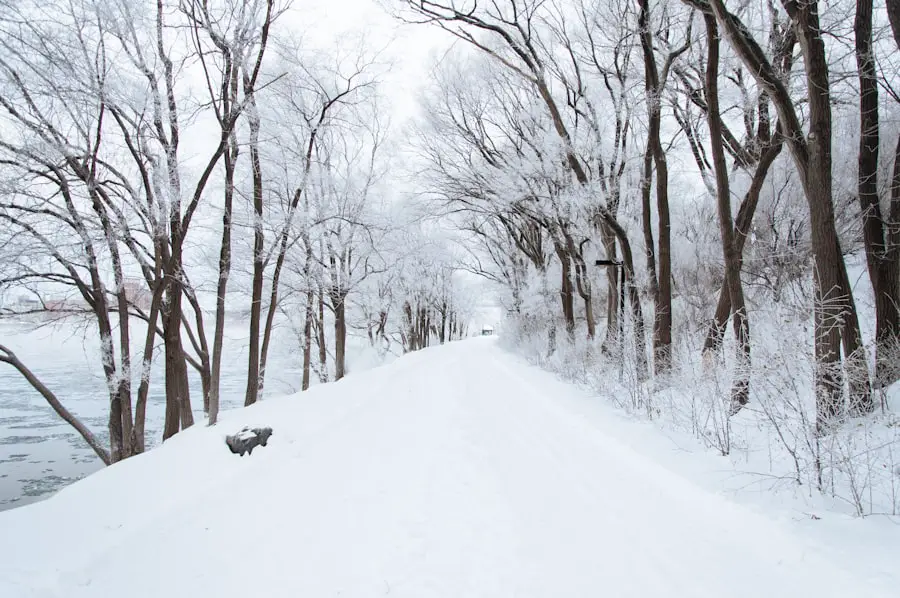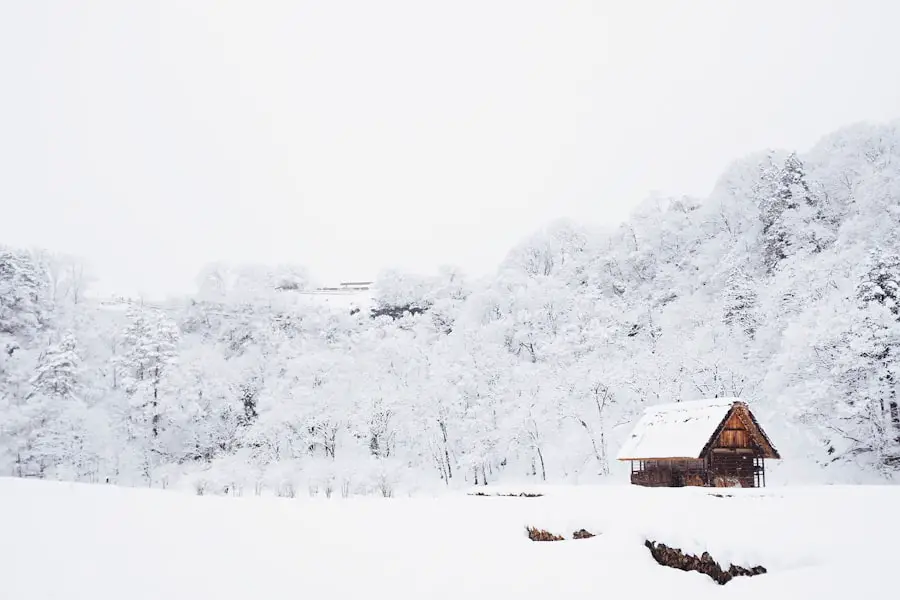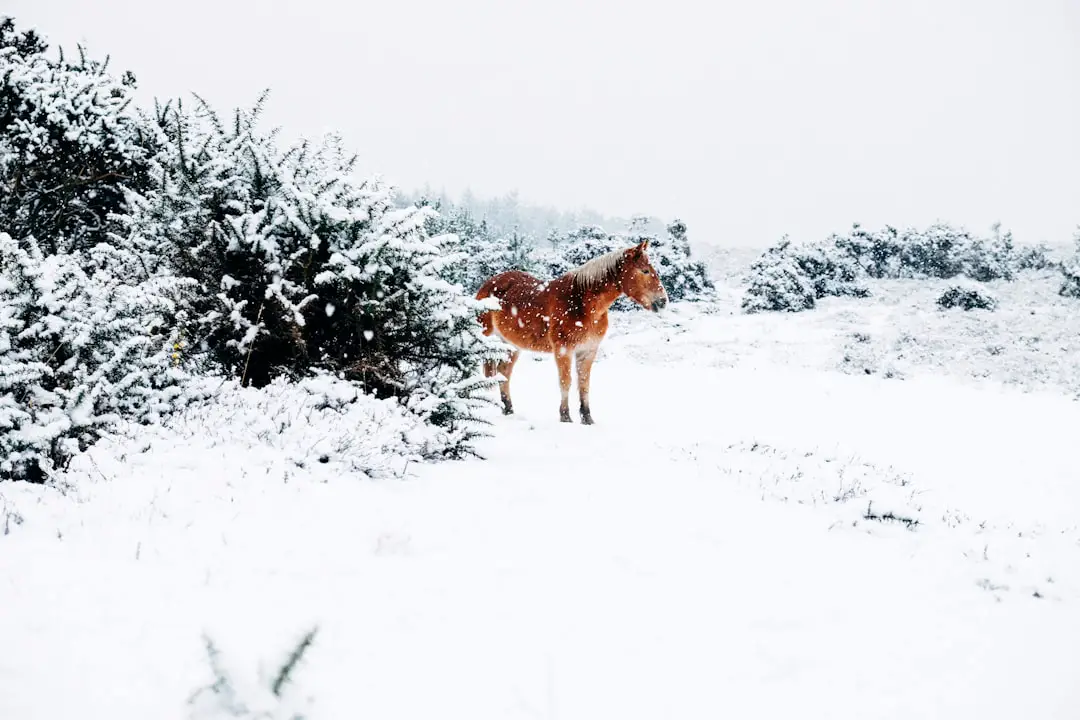Hiking boots are an essential piece of gear for outdoor enthusiasts, particularly when traversing challenging terrains. When winter arrives and snow blankets the landscape, the need for specialized footwear becomes even more pronounced. Snow-covered trails present unique challenges, including slippery surfaces, cold temperatures, and the potential for deep snow.
As such, understanding the role of hiking boots in snowy conditions is crucial for anyone looking to enjoy winter hiking safely and comfortably. The right pair of boots can make the difference between a delightful adventure and a miserable experience. The evolution of hiking boots has been significant over the years, with advancements in technology and materials leading to improved performance in various conditions.
While traditional hiking boots were primarily designed for dry, rocky trails, modern designs now cater to winter conditions, incorporating features that enhance insulation, traction, and waterproofing. This article delves into the importance of proper footwear in snowy environments, highlighting the features to look for in hiking boots, their benefits and drawbacks, and tips for selecting the right pair.
Key Takeaways
- Proper footwear is crucial for hiking in snowy conditions to ensure safety and comfort.
- Hiking boots for snow should have features like insulation, waterproofing, and good traction.
- Wearing hiking boots in snow provides benefits such as warmth, support, and protection from the elements.
- Potential drawbacks of wearing hiking boots in snow include weight and stiffness.
- When choosing hiking boots for snow, consider factors like fit, insulation, and waterproofing for the best experience.
The Importance of Proper Footwear in Snowy Conditions
Proper footwear is paramount when hiking in snowy conditions due to the inherent risks associated with cold weather and slippery surfaces. Snow can obscure trails, making it difficult to navigate and increasing the likelihood of slips and falls. Wearing boots that provide adequate support and traction is essential for maintaining stability on uneven and icy ground.
A good pair of hiking boots can help prevent injuries such as sprains or fractures that may occur from losing footing on treacherous terrain. Moreover, cold feet can quickly lead to discomfort and even frostbite if not properly managed. Insulation is a critical factor in keeping feet warm during winter hikes.
Boots designed for snowy conditions often feature materials that trap heat while allowing moisture to escape, ensuring that feet remain dry and warm throughout the trek. The combination of insulation and waterproofing is vital for maintaining comfort and preventing hypothermia in extreme conditions.
Features to Look for in Hiking Boots for Snow

When selecting hiking boots for snowy conditions, several key features should be prioritized to ensure optimal performance. First and foremost, insulation is crucial. Look for boots with materials such as Thinsulate or other synthetic insulations that provide warmth without adding excessive bulk.
A temperature rating can also be helpful; many manufacturers specify the lowest temperature at which their boots will keep feet warm. Waterproofing is another essential feature. Snow can quickly turn into slush or melt into water, so boots should have a waterproof membrane, such as Gore-Tex or a similar material, to keep moisture at bay.
Additionally, a high shaft height can help prevent snow from entering the boot, providing extra protection against wetness. Traction is equally important when navigating snowy trails. Outsoles made from rubber compounds with deep lugs are ideal for gripping slippery surfaces.
Some boots even come with built-in crampon compatibility or are designed to accommodate traction devices that can be added for extra grip on icy terrain. Finally, consider the fit of the boot; a snug yet comfortable fit is essential to prevent blisters and ensure proper circulation.
Benefits of Wearing Hiking Boots in Snow
| Benefits of Wearing Hiking Boots in Snow |
|---|
| 1. Insulation |
| 2. Waterproofing |
| 3. Traction |
| 4. Ankle Support |
| 5. Protection from Cold |
Wearing hiking boots specifically designed for snowy conditions offers numerous benefits that enhance the overall hiking experience. One of the primary advantages is improved traction. The specialized outsoles of winter hiking boots provide superior grip on snow and ice, reducing the risk of slips and falls.
This enhanced stability allows hikers to navigate challenging terrains with confidence. Another significant benefit is insulation. Winter hiking boots are designed to keep feet warm even in frigid temperatures.
This insulation not only enhances comfort but also helps maintain overall body temperature during outdoor activities. When feet are warm, hikers are less likely to experience fatigue or discomfort, allowing them to enjoy longer hikes without the distraction of cold extremities. Additionally, waterproofing features protect against moisture intrusion, keeping feet dry in wet conditions.
This is particularly important when hiking through slushy areas or when snow begins to melt. Dry feet contribute to overall comfort and reduce the risk of blisters and other foot-related issues that can arise from prolonged exposure to moisture.
Potential Drawbacks of Wearing Hiking Boots in Snow
While hiking boots designed for snowy conditions offer many advantages, there are also potential drawbacks to consider. One common issue is weight; winter hiking boots tend to be bulkier than standard hiking footwear due to added insulation and waterproofing features. This extra weight can lead to fatigue over long distances, especially if hikers are not accustomed to carrying heavier footwear.
Another drawback is breathability. While waterproof membranes are essential for keeping moisture out, they can also trap heat and moisture inside the boot if not designed with adequate ventilation. This can lead to sweaty feet, which may counteract the benefits of insulation by creating a damp environment that cools down feet over time.
Additionally, finding the right fit can be challenging with winter boots. The thicker insulation may require hikers to size up from their regular shoe size to accommodate thicker socks or foot swelling during activity. A poor fit can lead to blisters or discomfort during long hikes, making it essential for hikers to try on multiple pairs before making a purchase.
Tips for Choosing the Right Hiking Boots for Snow

Fitting Your Boots
First, prioritize fit; ensure that there is enough room in the toe box while maintaining a snug fit around the heel and midfoot. Trying on boots with the socks you plan to wear during hikes can help achieve an accurate fit.
Choosing the Right Boot for Your Hike
Next, consider your specific needs based on the type of hiking you plan to do. If you anticipate deep snow or icy conditions, look for boots with higher shafts for added protection against snow intrusion and enhanced ankle support. For those who prefer lighter hikes on well-groomed trails, a less insulated boot may suffice.
Research and Break-In Time
It’s also wise to read reviews and seek recommendations from fellow hikers who have experience with specific brands or models. Many outdoor retailers offer knowledgeable staff who can provide insights into which boots perform best in various conditions. Finally, don’t forget about break-in time; wearing new boots around the house or on short walks before embarking on longer hikes can help ensure comfort during your adventures.
How to Properly Care for Hiking Boots in Snowy Conditions
Proper care and maintenance of hiking boots are essential for prolonging their lifespan and ensuring optimal performance in snowy conditions. After each hike, it’s important to clean off any snow, mud, or debris that may have accumulated on the boots. Use a soft brush or cloth to gently remove dirt from the surface and outsoles.
Drying is another critical aspect of boot care. After cleaning, allow the boots to air dry at room temperature away from direct heat sources like radiators or fireplaces, which can damage materials over time. If your boots have become wet from snow or slush, consider using newspaper or boot dryers to help absorb moisture without compromising their structure.
Regularly applying a waterproofing treatment can also enhance performance in snowy conditions. Many products are available specifically designed for leather or synthetic materials; following manufacturer instructions will ensure that you maintain the integrity of your boots while enhancing their water resistance.
Alternatives to Hiking Boots for Snow
While hiking boots are often the go-to choice for snowy conditions, there are alternatives worth considering depending on individual preferences and specific activities planned. One popular option is snowshoes, which distribute weight over a larger surface area to prevent sinking into deep snow. Snowshoes can be worn over regular winter boots or specialized footwear designed for snowshoeing.
Another alternative is insulated winter boots designed specifically for cold weather activities like snowmobiling or ice fishing. These boots often prioritize warmth and waterproofing but may lack the ankle support and traction features found in traditional hiking boots. For those engaging in more casual winter walks or light hikes on well-groomed trails, waterproof trail runners may suffice.
These lightweight shoes offer breathability and comfort but may not provide adequate insulation or support for more challenging snowy terrains.
Precautions to Take When Wearing Hiking Boots in Snow
When venturing out in snowy conditions with hiking boots, several precautions should be taken to ensure safety and comfort throughout the hike. First and foremost, always check weather conditions before heading out; sudden changes in weather can lead to hazardous situations such as whiteouts or rapidly dropping temperatures. Layering clothing appropriately is also crucial; wearing moisture-wicking base layers combined with insulating mid-layers will help regulate body temperature while keeping you dry from sweat accumulation.
Additionally, wearing thick wool or synthetic socks can provide extra warmth while preventing blisters. Be mindful of trail conditions as well; icy patches may require extra caution or even additional traction devices like microspikes or crampons if you anticipate traversing steep or slippery areas. Staying aware of your surroundings and adjusting your pace according to trail conditions will help minimize risks associated with winter hiking.
How to Stay Safe and Comfortable While Wearing Hiking Boots in Snow
To ensure safety and comfort while wearing hiking boots in snowy conditions, it’s essential to listen to your body throughout the hike. Pay attention to signs of discomfort or coldness in your feet; if you notice any numbness or excessive sweating, it may be time to take a break or adjust your gear accordingly. Regular breaks are important not only for resting but also for checking gear; removing your boots periodically allows your feet to breathe and helps prevent moisture buildup inside the boot.
If possible, find a sheltered area where you can take off your boots briefly without exposing your feet directly to cold air. Staying hydrated is another key factor in maintaining comfort during winter hikes; dehydration can lead to fatigue and decreased performance levels. Carrying insulated water bottles will help keep your drinks from freezing while ensuring you have access to hydration throughout your journey.
Conclusion and Final Thoughts on Wearing Hiking Boots in Snow
Wearing hiking boots specifically designed for snowy conditions is essential for anyone looking to explore winter landscapes safely and comfortably. The right pair of boots provides crucial support, insulation, waterproofing, and traction needed to navigate challenging terrains effectively. While there are potential drawbacks such as weight and breathability concerns, careful selection based on individual needs can mitigate these issues.
By understanding the features that make hiking boots suitable for snow, as well as how to care for them properly and stay safe while wearing them, outdoor enthusiasts can fully enjoy their winter adventures without compromising comfort or safety. Whether trekking through pristine snow-covered forests or tackling icy mountain trails, having the right footwear makes all the difference in creating memorable experiences amidst nature’s winter wonderland.
If you are planning a winter hiking trip and wondering if you can wear hiking boots in the snow, you may also be interested in checking out this article on the best carry-on suitcase with a USB charger here. Having a reliable suitcase with a built-in USB charger can be a convenient and practical travel accessory, especially for those who enjoy outdoor adventures.
FAQs
What are hiking boots?
Hiking boots are sturdy and supportive footwear designed for outdoor activities such as hiking, trekking, and mountaineering. They are typically made with durable materials and provide ankle support and traction for various terrains.
Can I wear hiking boots in snow?
Yes, hiking boots are suitable for wearing in snow. They are designed to provide traction and stability on uneven and slippery surfaces, making them a good choice for walking in snowy conditions.
Do hiking boots provide insulation in snow?
Many hiking boots are insulated to provide warmth in cold conditions, including snow. Look for boots with Thinsulate or other insulation materials to keep your feet warm while walking in the snow.
Are there specific hiking boots for snow?
Some hiking boots are specifically designed for snow and winter conditions. These boots may have additional insulation, waterproofing, and specialized traction to handle deep snow and icy terrain.
How should I care for my hiking boots in snow?
To care for hiking boots in snow, it’s important to regularly clean off any snow and moisture, and allow the boots to dry thoroughly to prevent damage. Applying a waterproofing treatment can also help protect the boots from moisture and salt stains.
